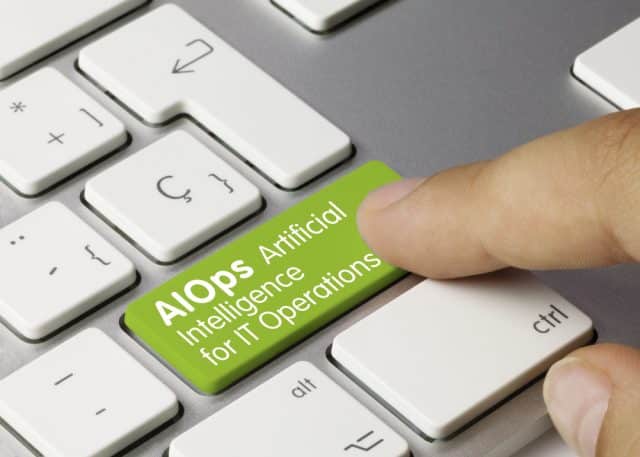AIOps needs a new (customer-focused) approach

IT infrastructure has become incredibly complicated -- intensified by the investment in digital transformations encouraged by the pandemic. One of the unintended consequences? IT teams and incident responders are stressed, and stretched farther than ever. PagerDuty’s The State of Digital Operations lays out the increased burden on these teams, the results in terms of burnout, and the impact having a more mature digital operations can have on minimizing that stress.
AIOps is an essential component to any mature digital organization, and it’s clear a new approach is needed. The sheer volume of IT events, from changes, warnings and incidents, to tickets for more routine activity are increasing 70 percent year-on-year. At a moment when increases in budgets won’t keep pace with the explosion of incidents or the complexity of IT infrastructure (if the budgets aren’t being reduced outright), leveraging AIOps to serve teams and customers is critical.
AIOps is a technological path beginning to gain recognition. It helps organizations move from a landscape of disparate alerts to consolidation, insight gathering, and control that mature digital organizations are already benefiting from. AIOps brings together data from monitoring tools, CI/CD, and potentially big data, security, and other tools with automation to give more power to IT processes and the staff accountable for them. With the growing sophistication of machine learning and automation, organizations can utilize AIOps to take control of incident response and remediation -- if they take the right approach. The goal is to move from a state of being overwhelmed by the volume of noise to effective and efficient incident management. Channeled correctly, AIOps can not only balance staff workloads -- leading to talent retention - it can positively impact customer experience, revenue protection, and cost control too.
AIOps is a solution to providing multiple improved outcomes that flow from well-managed IT operations, supporting the human element with the speed and accuracy that comes from automation, context creation, and consequent understanding.
Implementation plus planning leads to better ML outcomes
AIOps will offload the time-sensitive 'interrupt work' too often handled manually by underpowered IT teams that commonly disrupts their abilities to innovate and move digital transformation initiatives forward.
The right approach to automation within the IT team allows staff to resolve problems faster and get back to the planning, building, and maintaining the digital operations that drive customer experience. It leads to greater predictability and allows the more effective progression of the CTO’s strategic vision and critical business projects.
AIOps should look like:
- Seamless integration with existing observability/monitoring tools and incident response processes, allowing IT teams to get the most from the tools they are used to, and integrating previously inaccessible platform, infrastructure, and incident data
- Working with DevOps and SRE to support all parties, from the operational team to production, and development, to collaborate to build stronger end-to-end business solutions and processes
- Uncovering opportunities within existing infrastructure to make workflows more efficient from insights gathered by deploying machine learning algorithms. These will ideally adapt to the organization’s real needs and the actual environment
- Listening to how all teams use their existing tools, and using that knowledge to integrate AIOps to the benefit of their working practices in line with the project’s goal of overall IT operational efficiency and resilience. Training should support how teams actually do their job in the environment they are in
And it comes from the elements that AIOps brings together for IT operations:
- Automation that reduces manual labor and escalations, shortening incidents, and standardizing procedures. Rapid, routine, and critical staff tasks are delegated and automated processes -- including diagnostics and remediation -- become part of existing processes
- Data analytics and insights offering better operational and strategic decision-making
- Event management uses machine learning and data science to reduce noise and uncover the context for improved situational awareness
- Incident response that connects the right staff when needed and orchestrates the enterprise response as a whole
Automation solutions can offer specific benefits such as probable cause analysis, additional context, automated diagnostics, and suggested actions so staff can act in real time for quicker fixes -- or in an ideal scenario, automate the response itself. Any benefits should be evaluated in terms of their effect on the resolution of business problems -- and their impact on the customer experience.
A core measurement of the success of such AIOps in practice must be mean time to resolve (MTTR). Faster resolution is a critical foundation. Improving a variety of further business outcomes from reducing internal and customer churn and experience, to a variety of operational IT markers.
Additional business benefits
It follows that better incident and faster response times enhance customer experience and therefore impact retention. Smarter systems reduce pressure on teams, creating a throughline to stop employees from walking out through burnout due to always on-call incident response. And the data that offers operational context? It can be actioned to find opportunities to lower costs, reduce noise, and plot paths to proactive remediation and improvement. All told, AIOps can be cast as technology strengthening resilience, leading to better digital readiness, innovation, and growth.
Our infrastructure and supporting software has become more complex with technology innovation, multiple sources of change, and multiple hybrid integrations. When those teams building, maintaining, and remediating all day are merely running in place with break-fix solutions, the organization can’t truly focus on delivering quality experiences for its customers or internal stakeholders. In the digital age, business processes must be responsive and proactive to compete.
This in mind, AIOps will be a massive differentiator for the enterprises looking to grow even through whatever economic storms may come to pass over the coming decade.
Image credit: Momius/depositphotos.com

Heath Newburn is AIOps, Automation and Digital Operations Solutions Specialist at PagerDuty.
